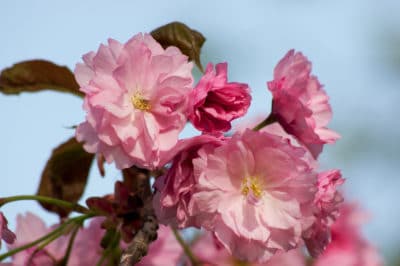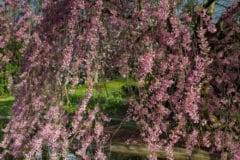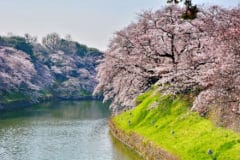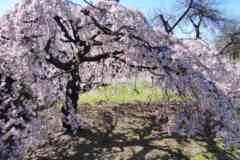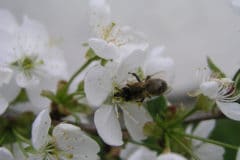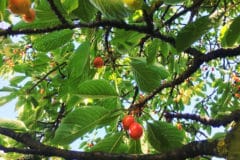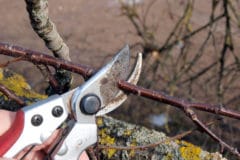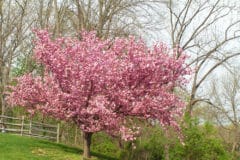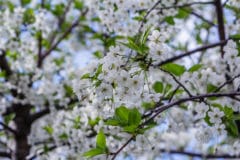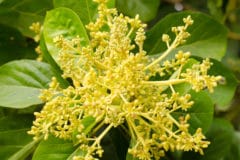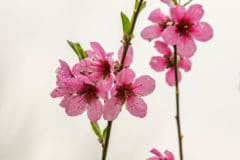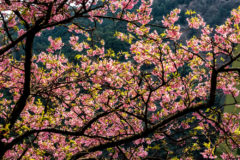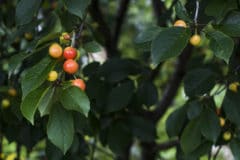Types of Flowers on Weeping Cherry Trees
Weeping cherry varieties bear different types of flowers which vary by:
- Color, ranging from bright pink, to dark pink, to white and even light greenish-yellow buds.
- Timing of bloom, ranging from Fudan-zakura (Prunus sargentii) and Yoshino cherry (Prunus x yodoenisis) which bloom earliest in spring to Ukon (Prunus serrulata Ukon) and Kanzan (Prunus Kanzan) varieties which come into flower later, at the end of the blossom season.
- Double blossom varieties such as Plena Rosea and single flower types such as Winter Sun and Alba varieties.
When Weeping Cherries Bloom
Weeping cherry trees bloom in the spring, often at the end of April. However, local weather conditions and temperatures can bring flowers on sooner or hold them back for several weeks.
The blossoms are short-lived, lasting only about two weeks on average. Planting several varieties with staggered bloom times is one way of keeping these attractive flowers around for as long as possible.
Weather conditions also affect how long the flowers last. If conditions are windy or rainy, blooms can be blown off of the tree early. Calm, drier conditions help blooms stay put for up to three weeks.
The Colors of Weeping Cherry Blossoms
The color of blossoms changes as the flowers open, come to full bloom, and fade. Some types start off light pink and then become darker. Many types begin blooming with dark pink buds which become lighter in color as the flowers open. The flowers of the Ukon variety begin as a light green color, then become white, and finally pink.
Double flowering types, such as Kwanzan, have many more petals on the flowers than average, the average being five petals per flower. Kwanzan, also known as Kanzan, trees have an astonishing 28 bright pink petals per flower, making these blooms especially robust.
On the other hand, the Yoshino variety has simple, five petal flowers which are a delicate white color. The simplicity of this flower type makes it a favorite in Japan.
With all these blossoms you might think these trees would be covered with fruit later in the year. However, ornamental cherry trees often have no fruit at all or only very small fruits which are enjoyed by birds and other animals. The lack of fruit on weeping cherry trees keeps end-of-season clean-up simple.
